New Ways of Seeing
There’s a journey out there that’s uniquely yours. And whether you’re drawn to mountains, the sea, exotic lands and people, or just a walk-about in your own city, these books show how travel can hold you in a place of comfort and healing, or shake you, hard, out of your shell into new ways of seeing, living, and caring.
Honouring High Places
The Mountain Life of Junko Tabei
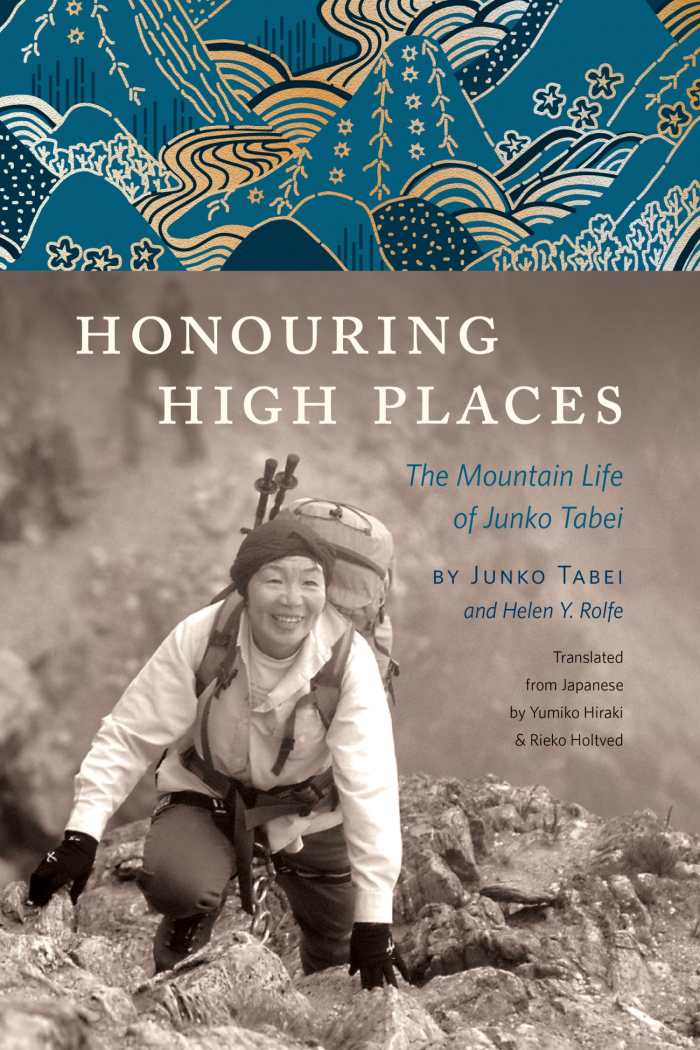
Junko Tabei
Rocky Mountain Books
Hardcover $32.00 (376pp)
978-1-77160-216-7
Buy: Local Bookstore (Bookshop)
Japanese mountaineer Junko Tabei earned international renown for being the first woman to climb Mount Everest and to complete the Seven Summits. People were always surprised when they met her; at five feet tall and weighing just over a hundred pounds, she looked nothing like a mountaineer. Lacking the brute strength and speed of men climbers, Tabei made up for both with discipline, determination, good sense, and strength of will.
Once considered an act of worship, mountaineering was just beginning to open up as a sport in Japan when Tabei came on the scene, and she was instrumental in opening the door for women to excel at it. Her successful Everest climb took place during International Women’s Year, 1975, and she wrote, “Whether I wanted it to be or not, our climb became a symbol of women’s social progress,” especially in Japan, where the culture had traditionally held women to a strict code of behavior.
Rather than being full of bravado, Tabei’s book is a humble, factual, beautiful, searing record of what it takes to summit the planet’s highest, most difficult peaks. It begins with an avalanche and the terror, disorientation, and pain of being crushed by the weight of snow, ice, and the tangle of fellow climbers buried alive on top of her. It ends with another kind of avalanche, when cancer finally conquered her indomitable will, though she managed to climb mountains in more than twenty countries even after her diagnosis.
Junko Tabei left a legacy of kindness and courage in sport and in life. “I would like to die saying it’s been a good life,” she often said. And at this, she also succeeded.
KRISTINE MORRIS (December 7, 2017)
The Solo Travel Handbook
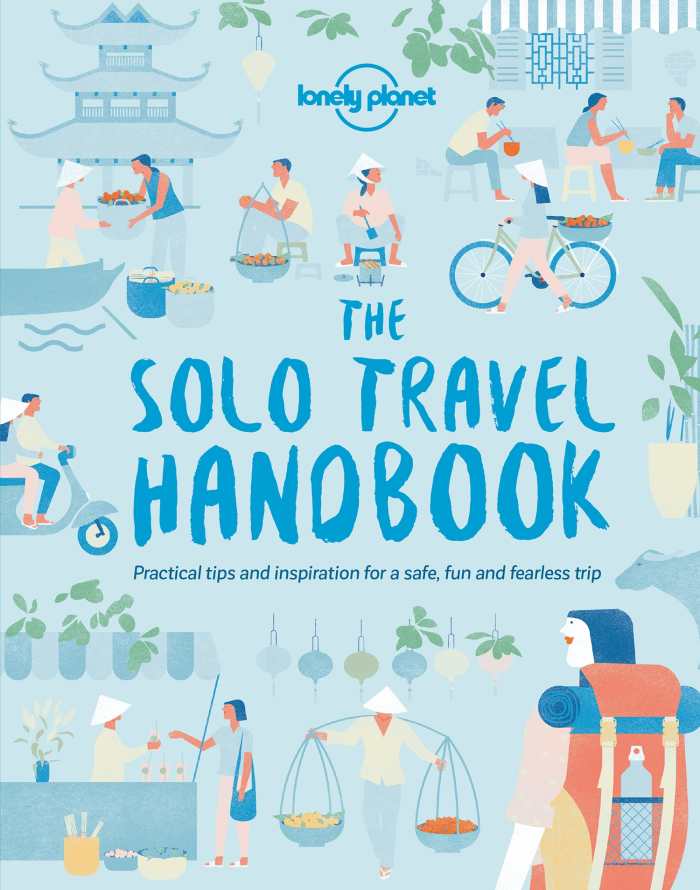
Lonely Planet
Lonely Planet
Softcover $17.99 (168pp)
978-1-78701-133-5
Buy: Local Bookstore (Bookshop)
Are you a good prospect for solo travel, or does the idea of finding yourself alone in a foreign place figure in your worst nightmares? According to the folks at Lonely Planet, solo travel is the “ultimate indulgence,” allowing you to come and go as you please—no compromises needed. If that sounds like your idea of fun, then this guidebook will whet your appetite for your first adventure. It may also fill in the blanks for more experienced solo travelers.
Solo travelers find that intuition, independence, and courage thrive, what’s really important in life becomes clear, simplicity becomes a joy, new ideas arise, and people actually learn to enjoy their own company. You don’t have to be an extrovert or hooked on adrenaline rushes to have fun, and going it alone is safe if you follow the book’s advice on choosing your destinations and behaving once you’re there.
With its quizzes, tips, apps, and solid information on budgeting and saving before and during travel, smart booking hacks, notes on tying up loose ends at home, and hints at saving on solo accommodations and packing like a pro (remember the duct tape!), this book will help every traveler make the most of their adventures.
There are also tips on things you might never think of, like the fact that bedbugs can hide in electrical sockets, how your new “best friend” at the hostel may not have your best interests at heart, ways to make your expensive gadgets unappealing to thieves, what to do when an ATM eats your card, and additional tips for women, including how to avoid attracting unwanted attention.
The Solo Travel Handbook will help you to design your best adventure ever. Read it and go!
KRISTINE MORRIS (December 27, 2017)
The Real Life of the Parthenon

Patricia Vigderman
Mad Creek Books
Softcover $21.95 (200pp)
978-0-8142-5458-5
Buy: Local Bookstore (Bookshop)
Patricia Vigderman’s The Real Life of the Parthenon uses Grecian sites as vehicles to explore the meaning that historical artifacts bring to their nations of origin and to the foreign lands that lay claim to them.
Growing up in Greece against a backdrop of ancient ruins rich with myth and history, Vigderman knew the affront created by British Lord Elgin’s removal of the majestic, though broken, sculptures that once graced the Parthenon. Now housed in the British Museum, they have become associated with “British pride and excellence and aspirations,” she writes.
Are museums complicit with tomb robbers and a greedy antiquities market? The discussion can become inflammatory, as rival claims to ownership entwine past and present into national myths even as the pillaging and looting of colonialism are brought to light.
“Money, power, and beauty snarl into complex arguments,” writes Vigderman, who thoughtfully questions and probes the issues rather than making judgments for either side. Her explorations take her to ruined temples, archeological excavations, and museums in Athens, Naples, Pompeii, Sicily, New York, and Los Angeles.
She ponders the difference between unlawful plunder and “collecting” for the good of culture as a whole, noting that the distinction can be blurred by time and by the need to justify the actions of one nation toward another. Although some venerable institutions that hold ancient objects are now in the process of returning them to their home cultures, other artifacts, like those taken from the Parthenon, remain in foreign hands.
Patricia Vigderman turns her deep, wide knowledge of culture and artifacts to a discussion that’s too long lacked honesty, clarity of vision, and compassion.
KRISTINE MORRIS (December 27, 2017)
Travel as a Political Act
A Radical Guide to Meaningful Travel
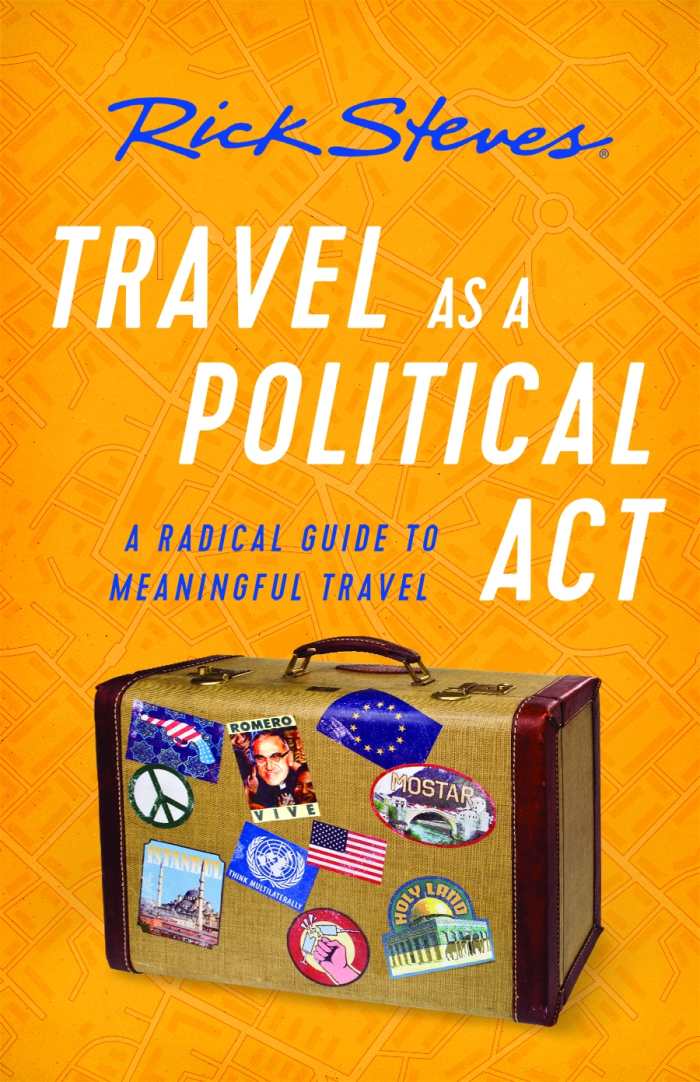
Rick Steves
Avalon Travel
Softcover $19.99 (304pp)
978-1-63121-763-0
Buy: Local Bookstore (Bookshop)
Since the first trip he took with his parents as a boy of fourteen, travel writer and businessman Rick Steves has lived a third of his life overseas, interacting with people whose worldviews are vastly different from his own. He makes a clear distinction between hedonistic travel that reinforces an us-and-them attitude and travel that is eye opening, challenging, and mind expanding—the kind he’s been teaching people for the past forty years.
Steves, who has received warm welcomes even from people in supposedly “enemy” lands, goes behind the scenes in the former Yugoslavia, still dealing with the legacy of a cruel war; Europe, attempting to unify disparate peoples and cultures while respecting their differences; the surprising secular Islamic cultures of Turkey and Morocco; Iran, where despite the bombast from leaders on both sides of the political divide, “most people genuinely like Americans”; and through the Holy Land, where, on both sides of the walls, bulletproof glass, and rhetoric, he found gentle souls facing big challenges.
Getting to know people in foreign lands and seeing how America looks from their perspective can have profound implications, and Steves writes that his “ethnocentric self-assurance” has taken a few good wallops. The kind of travel he advocates can shake us out of our complacency and awaken us to the real scope of global challenges, but it becomes a political act only if we act once we return home.
Steves’s experiences left him humbled, enriched, and tuned in to a rapidly changing world that, to survive, must replace hubris, bravado, and cultural blindness with knowledge, understanding, and activism on behalf of humanity’s common good.
KRISTINE MORRIS (December 27, 2017)
The Last London
True Fictions from an Unreal City

Iain Sinclair
Oneworld Publications
Hardcover $24.99 (336pp)
978-1-78607-174-3
London has been the almost obsessive focus of award-winning author Iain Sinclair’s writing for half of his life. But this city of his—with its peculiar myths and mysteries, its denizens of dark alleyways and park benches, its scholars and ghosts, its moist air and dark river currents—has stretched its known boundaries beyond recognition.
London has become, Sinclair writes, “a suburb of everywhere: Mexico City, Istanbul, Athens. The same malls. The same managed alienation. The Babel of misunderstood tongues.” Traveling its length and breadth, much of the time on foot and alone, he complains that he can no longer tell where the real London begins and ends. “London was everywhere,” he writes, “but it had lost its soul.”
Sinclair knows that his years of stalking the hidden truths of the city that for so long inspired, provoked, and sustained his writing have come to an end: “My sense was that London, my home for fifty years, was being centrifugally challenged to the point of obliteration.” Darkly, he compares its spread to that of “a single cancerous cell.” Restless, he needs to walk on but is not sure where.
Sinclair brings a rare gift for imagery and description to cap his life’s work on the city that absorbs him. His book is a symphony in words, dedicated to a London where vagrants “sprawled in purgatorial exhaustion”; hotels with “suspiciously pastoral names throbbed with sullen and illicit conjunctions”; and smokers, their hands cupped around their cigarettes, “waited for death on the pavement.”
By turns majestic, poetic, angry, funny, critical, and concerned, Sinclair’s prose is captivating as it laments the demise of what once made London unique among cities.
KRISTINE MORRIS (December 27, 2017)
Crossing California
A Cultural Topography of a State of Wonder and Weirdness
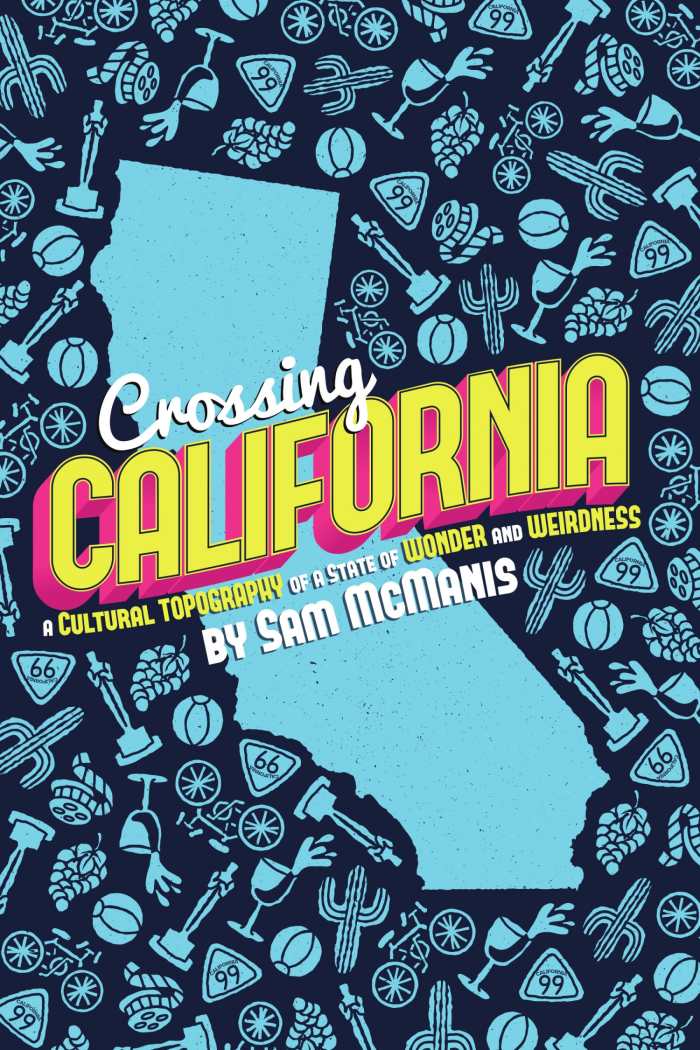
Sam McManis
Craven Street Books
Softcover $14.95 (280pp)
978-1-61035-313-7
Buy: Local Bookstore (Bookshop)
Sam McManis, an award-winning writer and former columnist for the Sacramento Bee, traveled the length and breadth of his state for five years, seeking the real California. No matter which direction he headed, he found California to be a wild, weird, and wonderful multiplicity of places created by the collision of vastly disparate people and topographies: rednecks and hippies, sophisticated urbanites and back-to-the-land types, Hollywood’s “beautiful people” and outsider artists, deserts and forests, mountains and valleys, seashores and dry beds where waters once ran freely.
McManis introduces some of the characters that make up California’s human landscape. These include an Imperial County man who engraved a granite history of the universe on over 2,600 acres in the hotter-than-Hades desert; artists who’ve created their work out of everything from old applesauce lids and discarded vacuum cleaners to toilet seats; and a former ballerina, nearing ninety, whose one-woman show in Death Valley Junction (population: 4) ran for five decades.
McManis found museums dedicated to bananas, PEZ memorabilia, and death. He descended into a ten-acre subterranean oasis in Fresno equipped with its own underground citrus orchards. He visited the Mission District, “where oddity is the norm and grunginess a way of life,” and the Los Angeles Pet Memorial Park and Crematory, where among other celebrity pets, the horse from the original Lone Ranger series and the lion from Tarzan are buried.
He ate in a blacked-out restaurant where all the servers were visually impaired, had a spa treatment in which a guy from Belarus administered “a bout of flagellation using bundles of tree branches,” and did time in a “rejuvenation machine” built under the direction of extraterrestrials.
Enjoy this quirky trip through California—a place that the passionate, the individualistic, and the outright weird can all call home.
KRISTINE MORRIS (December 27, 2017)
Niagara Falls for Everybody
What to See and Enjoy: A Complete Guide
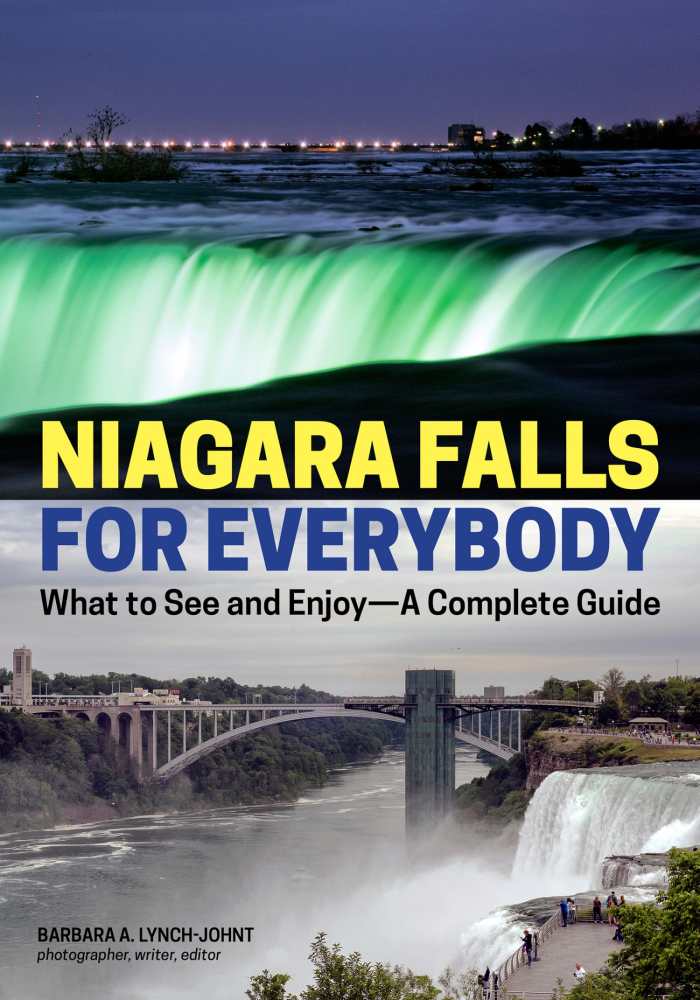
Barbara Lynch-Johnt
Amherst Media
Softcover $19.95 (128pp)
978-1-68203-322-7
Buy: Local Bookstore (Bookshop)
In her guidebook Niagara Falls for Everybody, photographer Barbara A. Lynch-Johnt, a Niagara Falls native, brings an artist’s eye, heartfelt love, and contagious curiosity to her story of the iconic natural phenomenon.
Folding time back to the last ice age, she reveals how the falls were formed, and gives a glimpse of the lifestyle of the area’s earliest inhabitants. She then traces the history of the falls through devastating wars, the creation of peaceful national borders, and the rise of farming, trade, fishing, and especially tourism. It’s a history marked by clashes between industry and those who wanted to keep the area pristine; issues of ownership and rights to harness the power of the water; industrial pollution; poverty and crime on the American side; and the rise of tourism on the Canadian side that led to the area’s thriving.
Spiced with surprising, fun facts—such as that the first daredevil to go over the Falls in a barrel was a sixty-three-year-old schoolteacher, Annie Edson Taylor, in 1901—the guidebook features lush photographs and descriptions of things to do and places to see on both the American and Canadian sides, as well as practical information to make planning a visit easy.
Lynch-Johnt explains what you need to cross the US-Canada border, shares the best viewing sites, and reveals not-to-be-missed photo opportunities. She highlights restaurants, parks, The Haunted House of Wax, an adventurous Whitewater Walk, cruises, fireworks displays, the impressive Skylon Tower with its revolving dining room, and many more venues designed to appeal to all ages and interests.
With its mix of beauty, history, whimsy, and practical information, Niagara Falls for Everybody is both an enticing invitation and an indispensable guide to a magical, marvelous place.
KRISTINE MORRIS (December 27, 2017)
Swell
A Sailing Surfer’s Voyage of Awakening
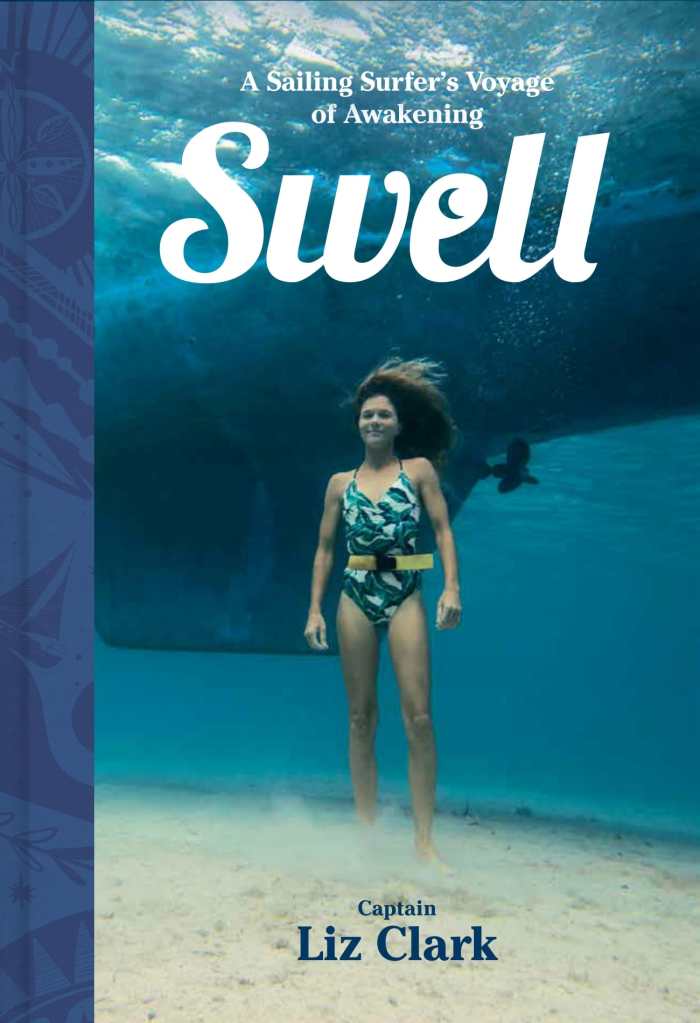
Liz Clark
Daniella Manini, illustrator
Patagonia
Hardcover $35.00 (320pp)
978-1-938340-54-3
Buy: Local Bookstore (Bookshop)
A series of serendipitous events, a generous mentor, and lots of hard work made it possible for young Liz Clark to fulfill her childhood dream of sailing and surfing around the world. But sailing Swell out of San Diego and watching her loved ones blur into the hazy winter skyline, she questioned the wisdom of undertaking a journey that would test her on all levels, and maybe even break her.
On dark nights alone at sea, Clark was often saved from a descent into depression by the beauty and sacredness of the life around her—in the poor fishermen who shared their catches with her, or a group of dolphins trailing phosphorescence in their wake. Physical, mental, emotional, financial, and relationship difficulties would bring her near collapse, but then her spirits would be lifted by the sea’s vast horizon, the amazing rush of surfing, the smile of a friend, or the belief that she could somehow make a difference. She who used to panic at the thought of spending a Saturday night alone came to find solitude delightful, satisfying deep hungers.
There were violent storms with wind, waves, and lightning that rocked her to her core; she cooked at a 65-degree angle while stuck on a sandbar; she survived a scary, abusive relationship; she struggled with boat repairs; she panicked at the end of her sponsorship agreement; and she had a near run-in with Colombian drug runners in Panama. Material poverty was everywhere, as was pollution amidst the beauty; she pondered the ability of humans to destroy that which sustains them.
In mastering the discipline needed for a journey where “one lazy decision can mean losing everything,” Clark came to love herself just as she was, and to know that, in choosing love, she would never feel lack.
KRISTINE MORRIS (December 27, 2017)
Kristine Morris

